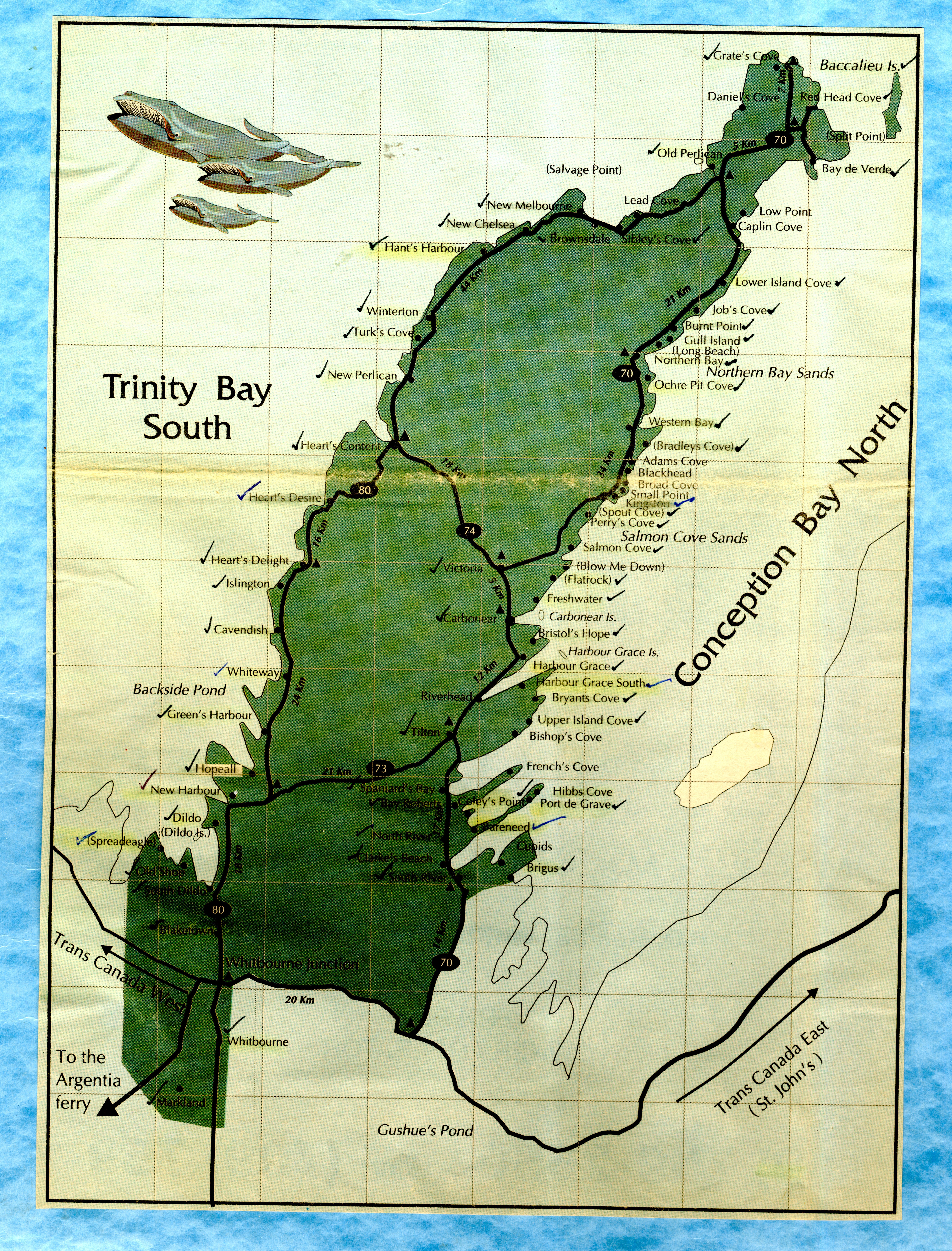Thomas Ridley (1799 – March 20, 1879)
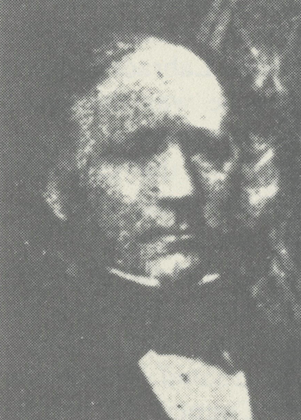
Figure 1: Thomas Ridley
Thomas Ridley came to Newfoundland to work for his uncle William Bennett, a merchant with premises at Adams Cove, Carbonear. By 1824 they had formed a partnership, Bennett and Ridley, which lasted until the late 1820s. Ridley, having married Margaret Harrison, daughter of a well-to-do Liverpool family, was joined by her relative Thomas Harrison in the firm of Thomas Ridley and Company, with headquarters at Harbour Grace but with stores as well at Carbonear and Western Bay. In spite of the fire of 1832, which destroyed much of Harbour Grace, Ridley built up a flourishing business. In the late 1830s Ridley established a partnership with Gilbert Henry Harrison and James Harrison—Ridley, Harrison and Company. After the death of Gilbert H. Harrison in 1849, this partnership was dissolved and Ridley took his two sons, Thomas Harrison and William, into the business as Ridley & Sons.
Several incidents in the 1830s, a decade marked by enmity between fishermen and merchants, show that Thomas Ridley was especially unpopular. In February 1832, after the sealers’ strikes and riots at Harbour Grace and Carbonear, every local merchant made concessions except Ridley. As a result, a mob of fishermen boarded and partially destroyed Ridley’s schooner, the Perseverance. In the 1836 general election, Ridley was forced to withdraw as the Conservative candidate because of violence and intimidation. Then in the Conception Bay by-election of December 1840, trying in his capacity as a magistrate to keep order, Ridley was hit over the head and nearly killed. The times, nevertheless, were changing. In 1842 Ridley was elected to represent Conception Bay in the Amalgamated Legislature. From 1843 to 1848 he also sat as a member of the Executive Council.
After the death of partner Gilbert H. Harrison, Thomas Harrison Ridley emerged as the most prominent member of the family. Ridley & Sons soon expanded and played a leading role, second only to that of John Munn’s firm, in the development of Harbour Grace as the commercial centre of Conception Bay. They set up a branch at Catalina, took part in the seal hunt, carried on extensive operations on the Labrador, and began to develop the winter codfishery at Rose Blanche.
Because of his wealth and power, Ridley and his family were involved with several “firsts” in Harbour Grace. In 1854 he was the first to use gas lighting, and in 1866 he was the first to use a steamship in the annual seal hunt. William Ridley was one of the founders of the Harbour Grace Water Company, the Harbour Grace Railway and the local grammar school.
In the fall of 1870, the news that Ridley & Sons were in trouble came as a shock both to their creditors and to the many fishermen depending on them for winter supplies. Despite efforts to keep the business going, Ridley & Sons were declared insolvent in 1873. They sold their Harbour Grace premises and several Labrador fishing rooms to the Munns and moved back to England, where Thomas Ridley died six years later in Upper Tooting, Surrey.
Thomas Harrison Ridley (? – 1904)

Figure 2: Thomas Harrison Ridley & wife
The son of Thomas Ridley and Margaret Harrison, Thomas Harrison Ridley entered the family mercantile business as a young man. In 1849, after the death of his father’s partner, Gilbert H. Harrison, he took over most of the firm’s day-to-day operations. Under his direction the firm of Ridley and Sons expanded from Harbour Grace to Catalina and Rose Blanche, and into the Labrador fishery. On February 19, 1858, he married Ms. Darling, niece of Charles Henry Darling, former Governor of Newfoundland. In 1866 he was the first outport merchant to use a steam vessel in the seal fishery. The following year he had two such vessels, the Retriever and the Mastiff.
Ridley’s political career began in 1855—the year of Responsible Government—when he was appointed to the Legislative Council. He resigned in order to contest a seat in the House of Assembly for the “Confederation election” of 1869 and was elected for Trinity Bay as a confederate. He resigned in 1871 to devote his time to the family firm, now facing bankruptcy. Three years later the firm went into receivership, the premises sold to John Munn and Company. Thomas Harrison Ridley left for England with his family (including his father). He died in London in 1904.
History of Ridley Hall (ca. 1834)

Figure 3: Ridley Hall, ca. 1940
Built for Thomas Ridley (Sr.) in 1834 and located amongst a collection of ornate mercantile houses, Ridley Hall was the centre of most of the social, political and economic activities in Harbour Grace. Once the “capital of Conception Bay,” the town was a bustling seaport, home to the most powerful trading firms outside of St. John’s.
Ridley Hall has historic value for its varied uses. Sometime after its initial construction, probably in the 1850s, a two-story frontal bay and a ballroom, the doors of which led to a series of formal English gardens, were added.
The aesthetic refinement of Ridley Hall matched the glamorous events often held on the property. One particular ball held by Thomas Harrison Ridley on Friday, August 10, 1855, was said to be the “certainly in every respect the most brilliant entertainment that has ever taken place in Newfoundland.” The Newfoundlander’s August 13, 1855, issue related the details of this noted event:
“Cards were issued to 200 people, but in consequence of the inclemency of the weather, the attendance was not much more than 100. There was, however, a dazzling display of rank, beauty, and fashion. His Excellency Governor [Charles Henry] Darling arrived from St. John’s in the steamer “Ellen Gisborne,” accompanied by his Private Secretary, the Honourable the Speaker of the House of Assembly, and other gentlemen, on Wednesday evening, to honor the occasion. The living tide commenced to flow rapidly to the point of attraction, shortly after 8 o’clock, and from that hour until morning, the rolling of carriages through the streets well nigh expelled slumber from every couch. To describe the appearance of the room (which was a temporary decorated pavilion erected for the purpose), densely occupied by many of the fairest of creation—their luxurious, yet tasteful dresses enhancing even the charm which nature had bestowed on them—their lovely eyes flashing not less lustrously than the rich chandeliers and gas lights with which the room was studded; the splendid uniforms of the military—the admixture of gravity and gaiety in the costumes of the gentlemen, et cetera—to do justice to these themes, I say, would require the aid of a more vivid imaginations than I can boast. But the Hon. Mr. Ridley can congratulate himself on a display which it would be vain to attempt to rival.
The supper, which was magnificent, both as to viands of the choicest wines of the purest vintage, was laid out in true artistic style by Monsiuer Toussaint of St. John’s, and the music was admirably performed by the Quadrille Band of the Royal Newfoundland Companies. After supper the gay dance was resumed and kept up with great spirit until morning, when the company, highly delighted with the enjoyments that had been prepared for them by their kind and hospitable host, began to depart.
On the following morning at 11 o’clock, His Excellency was waited on by a deputation of gentlemen of Harbor Grace, who presented him with the following congratulatory address, after which the Governor proceeded to board the steamer, “Ellen Gisborne,” accompanied by his suite, and a number of the ladies and gentlemen of the party, and took his departure for St. John’s amid the loud, long and hearty cheering of the loyal people of Harbor Grace, the band on board replying with that beautiful and appropriate Scotch air, “Auld lang Syne,” as the steamer glided gracefully from her moorings.”
To celebrate his son Thomas Harrison’s wedding to Ms. Darling, niece of Charles Henry Darling, former Governor of Newfoundland, Ridley held a grand reception, with a marquee tent on the lawn of the property. According to the local press, “arms were discharged and champagne liberally dispensed.” On August 2, 1866, another grand ball was held in honour of the representatives attempting to recover the Heart’s Content transatlantic cable. The ballroom addition at the rear of the house was used for this event. Daniel Gooch wrote of the party in his 1866 diary:
“Everything was now done to prepare to go and make the attempt to recover our lost cable. We had coal ships at Heart’s Content ready for us, and this had to be taken in. This occupied us until the 9th August. During this time our ship was a kind of open hotel; dozens of people came from various parts of Newfoundland and brought their bag[s] with them, quite looking upon us as a place where they might live at free quarters. Amongst them, however, were many very nice people from St John’s, and also from Harbour Grace; a Doctor and his daughter were friends of the Captain’s, and we saw a good deal of them. They sent the Capt a present of a young Newfoundland dog, 9 months old, born in Novr 1865. The Capt gave it to me and I was very pleased to have him. He is a beautiful pure blood Newfoundland, without a white hair upon him, and born of the same parents as the dog that was presented to the Prince of Wales. The breed is called the O’Sullivan breed. He & I soon became very fast friends and remain so. His name was given to him before I got him, it is Norval.
“Mr Ridley of Harbour Grace gave us a grand ball at his home. He put up a large timber ball room and did the thing exceedingly well. I dined and slept at his house. The road to reach this place from Heart’s Content was an awful one, the distance about 16 miles and time about 4 hours. He sent his carriage for us, or as many as it would hold. I fancied I never saw so many good-looking women in a room together before. A family at New Perlican, about 4 miles from Heart’s Content, were also very kind to us, of the name of Howley. I am sorry to hear he is since dead; he considered himself a large farmer, having about 25 acres of land under cultivation. Land here may be bought at 1s/- per acre, yet it is not cultivated; the fishermen never seem even to cultivate a garden round their cottages, altho’ they often have a great deal of time on their hands to spare.
“While we were at Heart’s Content the weather was very variable; when bright it was very hot, but the fogs and rain were cold. I scrambled about on the hills surrounding the harbour, but the thick scrub wood made it a very difficult task; but on the whole I very much enjoyed my stay there.”
An apocryphal story says a former King of Spain attended a ball at Ridley Hall. The estate held such preeminence in the community that sailors traditionally saluted on passing.
Ridley and Sons declared insolvency in 1873, and in late 1876 the Ridley Hall property was advertised for sale in editions of the Harbour Grace Standard. The property for sale was described as:
“[A] Dwelling House, with Conservatory attached, Stables, Coach houses, Ice-house, a large Lawn and Garden in front well stocked with Fruit and other Trees, two Kitchen Gardens and Meadows. [It] is well supplied with water, and extends from Water to Harvey St.”

Figure 4: Advertisement in the Harbour Grace Standard, March 3, 1877
John Munn and Company subsequently purchased the firm’s two landmark assets, Ridley Offices on Beach Hill and Ridley Hall on Water St. The house was later sold again after the disastrous Newfoundland Bank Crash of 1894 (Black Monday), when trade came to an abrupt halt; unemployment and destitution became widespread after two of the commercial banks of Newfoundland closed their doors and never opened again.
However, despite changes in ownership, Ridley Hall continued to be a cultural event space for the community. In June 1884, a successful fine arts reception was held at the Hall, attended by many of Harbour Grace’s “principal townsfolk,” who came to see the work Mr. Blanvelt’s art students. Blanvelt carried the exhibition over multiple days, letting people view the exhibition during the day and evening.
The house later became the property of Edward Quinton, who, in the early 1900s, sold it to John Maddock, an English-born businessman who operated a general cash and supply business in Harbour Grace. In his retirement he spent his time looking after renovations at the Hall but put the property up for sale in 1905. Advertisements in the Evening Herald in spring 1905 describe the property as:
“Ridley Hall, Stone and Brick Building. Freehold property, containing large frost-proof cellars and 17 rooms. Also, Large Stable, Coach and Cattle Houses. Also a good Lawn and Meadow, a large Vegetable and Fruit Garden, centrally situated in the city, a good site for a hotel. Frontage on Water Street 260 feet more or less; on the east by Kerry Road to Harvey St., [?]20 feet more or less; on the north by Harvey St., about 220 feet…”
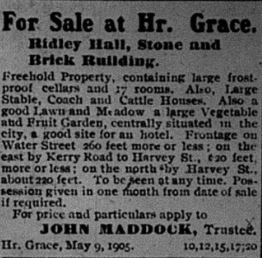
Figure 5: Advertisement in the Harbour Grace Standard, May 18, 1905
Dr. C. Alfred Ames subsequently purchased the property from Maddock around June 1905. In a piece in the Evening Herald on July 5, 1905, a traveller notes that Ames had purchased Ridley Hall and was renovating it. The traveller remarks that if Ridley Hall “had been taken over by a company and converted into a model hotel, it with its grounds and surroundings, would have made an ideal one and the many inducements afforded tourists, would be the means of bringing many tourists here who now do not come owning to the fact that hotel accommodations cannot be had.” Throughout 1905 and 1906, Ames’s clinic information was advertised in the Harbour Grace Standard, operating from 9 a.m. – 11 a.m. and from 4 p.m. – 6 p.m. at Ridley Hall.
The estate’s next incarnation was as a cable station in Harbour Grace. In the 1870s, the Direct United States Cable Company (Direct Cable) considered landing its transatlantic cable in Newfoundland. However, with the Anglo-American Telegraph Company’s monopoly on the island, Direct Cable had to settle for splicing their cable, attached to a buoy in Trinity Bay. After Anglo-American’s monopoly expired in 1904, Direct Cable decided to take advantage of the shorter transatlantic distance, transferring their western terminus from Halifax, Nova Scotia, to Harbour Grace, Newfoundland. In April 1910 Mr. Fenn, superintendent of Direct Cable, purchased the Ridley Hall property from Mr. D. Munn on behalf of the company. Part of this purchase included a section of beach property formerly occupied by a cooperage, where the cable landed and connected with Ridley Hall (see figures 6 & 7 below), the new cable station and office. On August 3, 1910, the SS Colonia diverted the company’s 1874 Ballinskelligs, Ireland, cable to this new location. By terminating the western end of its cable in Newfoundland rather than Nova Scotia, the company doubled the speed of their telegraph transmissions, thus allowing twice the number of messages to be carried.
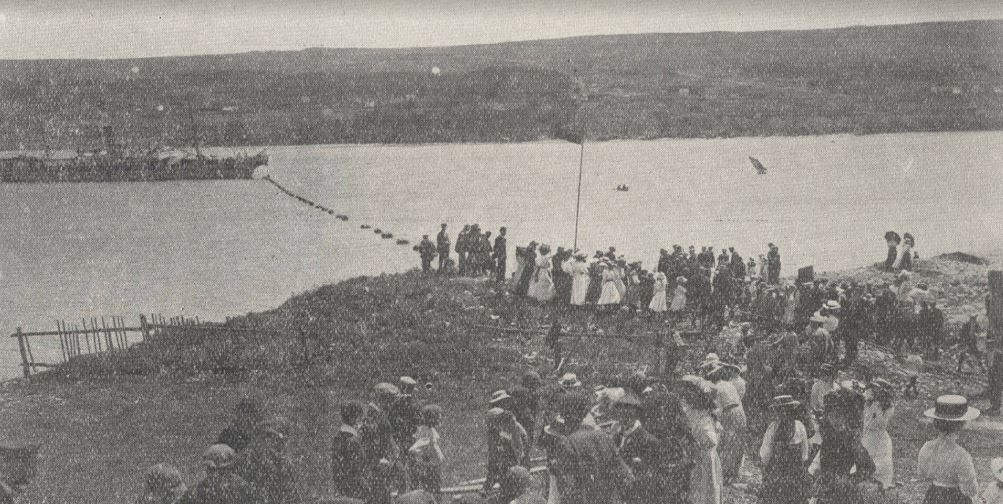
Figure 6: SS Colonia landing the cable at Ridley Hall, August 3, 1910
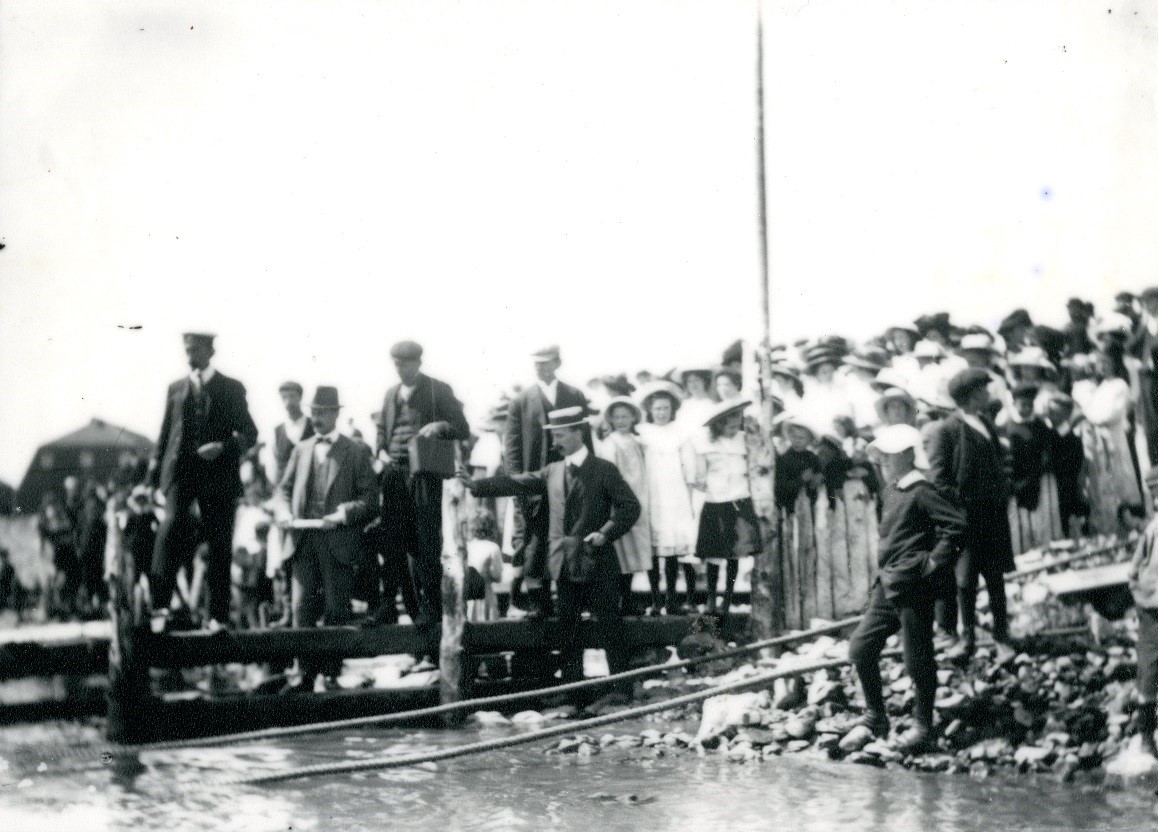
Figure 7: Landing the cable at Ridley Hall, near the former beachfront cooperage, August 3, 1910
At Ridley Hall, the cable offices were located on the first floor, with the manager’s office and quarters upstairs. The station operated only one cable and was staffed by approximately dozen employees, including a manager and three engineers, who rotated from Direct Cable’s English offices on a three-year basis. Mr. T. Gothorpe was the first manager of the Harbour Grace cable station and lived there with his family. However, Ridley Hall continued to be a place of arts and culture in its days as a cable station. For instance, the Harbour Grace Standard records how Mrs. Gothrope once invited “the book club and a few others” to hear Mrs. Ronald Kennedy read “a paper descriptive of the Passion Play at Oberammergau.”

Figure 8: Digging the underground cable to Ridley Hall, 1912
In 1912 Western Union consolidated its Conception Bay operations and connected the Harbour Grace station with Bay Roberts’ station via an underground cable, which landed near Bears Cove Bridge, in Harbour Grace’s east end, and was trenched to Ridley Hall (see figure 8). Gothrope and his family subsequently moved out to make room for the increased number of instruments required to work the extra cables. The Harbour Grace operation was later transferred to Bay Roberts but started again at Ridley Hall in spring 1919, under the watch of new superintendent Mr. T. Bellamy. The Evening Telegram of April 28, 1919, relayed this move in a short piece, noting the “magnificent property [Ridley Hall] is[] surrounded by beautiful gardens, and sufficient land to produce sufficient potatoes, turnips, vegetables, etc., for the operators and their families.”
After the Newfoundland government contracted Commercial Cable for its off-island telegraph business, the British government’s “All Red Route”— the policy to connect their expansive empire through British-owned telegraph facilities, in the event of international strife—was in jeopardy. To strengthen its control, in 1920 the British purchased Direct Cable, operators of the Harbour Grace station and the transatlantic cable. The landline arrangement between Harbour Grace and Bay Roberts was later discontinued, and Harbour Grace operated its transatlantic cable in competition with others. In 1922 the company transferred the eastern end of the cable from Ireland to Penzance, Cornwall, England.
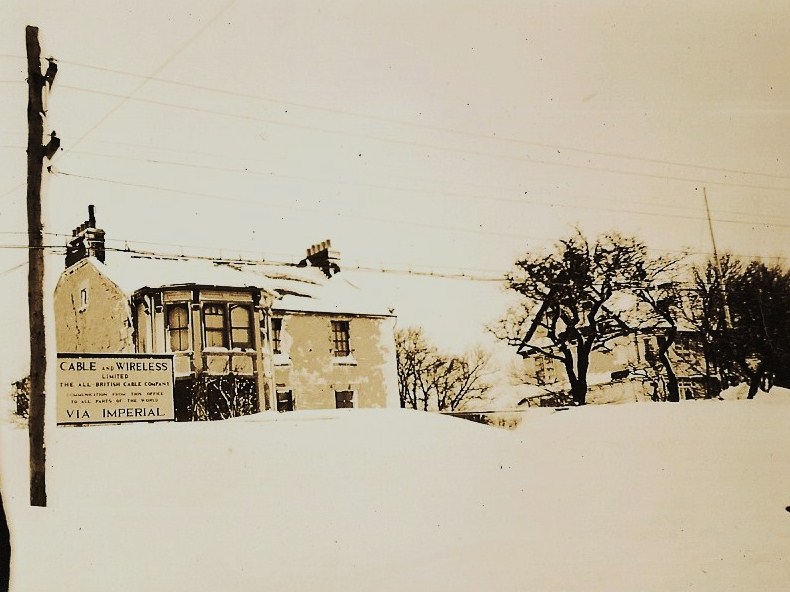
Figure 9: Ridley Hall (“Electra House”), property of Cable and Wireless Ltd, ca. 1934
In 1929 the operation became part of Imperial and International Communications Company. In April 1931 Mr. A. Pierce replaced Mr. H. Hinton as the new operating manager of the Ridley Hall cable office. The Company later took the name Cable and Wireless Ltd in 1934. The Company officially named Ridley Hall “Electra House,” though the building was commonly known as just “the cable office” by residents. After Confederation in 1949, the Canadian Overseas Telecommunications Corporation (COTC) acquired the assets of Cable and Wireless. In 1949 the European terminus was transferred to nearby Porthcurno, Cornwall, England.
On August 17, 1944, Ridley Hall barely survived the third ‘Great Fire’ of Harbour Grace. The fire destroyed a large part of the business district and many residences in town. The fire started about half a mile east of the cable station, but high winds carried embers for miles around. Mr. F.G. Webster and his staff, including several carpenters and soldiers employed at the building, put out the fires in and around the property. The tar roof was vulnerable to fire and was covered with lime and other fire-retardant material. The day was particularly grievous for Franklin P. Legge, who injured himself when a wall collapsed at the station; his house and possessions were also burnt. In a letter to the Chairman of Cable and Wireless, R.E. Smith, Douglas M. Burke, Eugene J. Farnham and C. Pike were singled out for their brave efforts to save the building from destruction.

Figure 10: Cable workers at Ridley Hall, ca. 1947. Pictured: Back row: Eugene J. Farnham, Franklin Legge, Neil Legge, Harry Jones; Middle row: John Eades, R.V.C. Middleton (manager), Douglas M. Burke; Front row: Basil E. Martin and his Jack Russell Terrier, Spinx

Figure [–]: Cable officers at Ridley Hall, ca. 1947. Back, from left: Franklin Legge, Coe, Harry Jones, [–] Ryde, [–] Downer, Chrispin, Eugene J. Farnam, Douglas M. Burke. Front: Basil E. Martin.
A year earlier, in 1943, the company’s transatlantic cable had developed problems and could no longer be used. Despite World War II raging in the Atlantic, attempts were made to repair the cable, with no results. Cable and Wireless instead continued to use the Halifax cable for telegraph business. In 1951 the company made another serious attempt to put the transatlantic cable back online. Due to seven years of neglect, the needed repairs were extensive. The 8,050-tonne H.M.T.S. Monarch and C.S. Lady Dennison Pender surveyed the condition of the cable and fixed any outstanding breaks. However, the ships discovered an 800-mile gap in the cable, which had to be completely replaced approximately 218 nautical miles from Harbour Grace, 1,134 nautical miles from Porthcurno. As well, 400 nautical miles of the Halifax section of the cable needed repair. In total, the repairs cost $5.3 million.

Figure [–]: R.V.C. Middleton, 1947.
In an Evening Telegram profile dated September 30, 1947, R.V.C. Middleton is listed as the Cable and Wireless manager-engineer in Newfoundland. Middleton had previously served in “Portugal, Gibraltar, Malta, Aden, Zanzibar, Mozambique, Bombay, Madas, Portuguese West Africa, Durban, Ascension Island, Seychelles, Port Said, and Cairo.” This frequent movement of telecommunication staff, recruited in England, was to ensure senior managers and engineers had a wide and varied experience in all branches. During this time, the assistant engineer at Harbour Grace was E.P. (John) Eades. Eades, trained also as a radio engineer, served in England, Bermuda, and Jamaica before coming to Newfoundland. The remaining staff at Ridley Hall were Newfoundlanders, the policy of Cable and Wireless being to employ local men wherever possible and encourage them to qualify for high grades in the service.
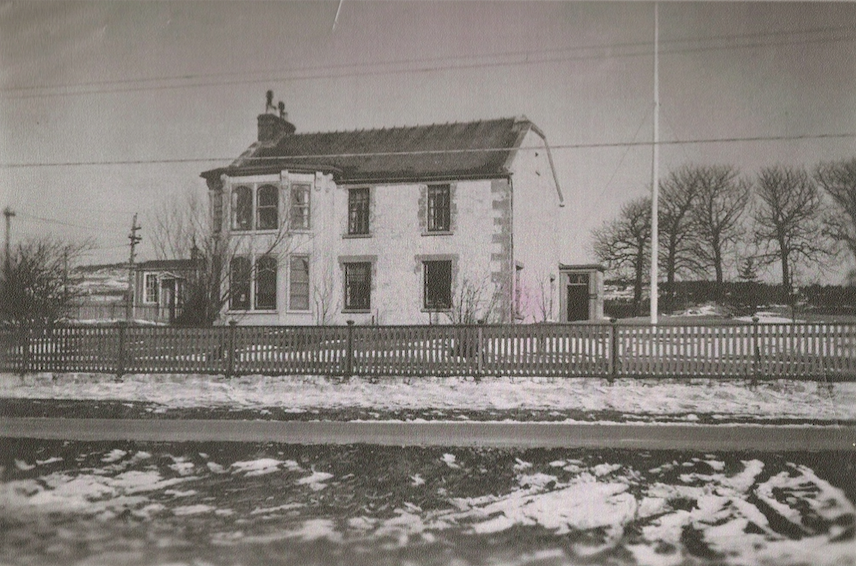
Figure [–]: Ridley Hall as Cable & Wireless Station
The 1949 Cable and Wireless Schedule of Properties gives a useful description of the building post-fire. The cable office with manager’s flat was valued at £1566. It was described as having 2 bedrooms, 3 servants’ bedrooms in attic–a total of 10 rooms including kitchen and bathroom. The manager was the only resident and there were 5 local clerks. The cable hut had been built of concrete in 1936 and was valued at £78. The total land amounted to 3 acres.
Cable and Wireless’ property in Harbour Grace had various uses through the years. Notably, they let a field to the Hockey Association and for grazing. Between 1943 and 1945, the navy had a lease for an ice hockey rink, but this reverted to the Ice Hockey Association on January 1, 1946. In 1947 R.V.C. Middleton signed an agreement which permitted the Harbour Grace Ice Hockey Association the non-exclusive use of the field at a nominal rent of $1 per annum, to be paid in advance.
The Monarch laid the new cable in the summer of 1952, and on August 6 communications were re-established between Harbour Grace and Porthcurno for the first time in nine years. The staff then included C.H. Ryde (manager), Doug M. Burke, C.J. Coe, G.C.R. Downer, Eugene J. Farnham, J.H. Jones, Franklin P. Legge and Basil E. Martin.
By August 21, 1952, the Monarch had repaired and replaced the Halifax cable, re-establishing that part of the circuit. After a long period of intermittent service, the Harbour Grace cable station was in full operation once again. However, for efficiency reasons, the station’s operations moved to St. John’s. Burke took over as acting manager and oversaw the closing of the Harbour Grace office in 1953, when COTC moved the cable terminus to St. John’s.

Figure 11: Ridley Hall ruins, 2018
On November 19, 1954, the cable office was sold to Harry Archibald, of Harbour Grace, for $7,500. Archibald and his family used the building as a residence. After Archibald’s death, his son Howard lived there until October 1991, taking on necessary repairs and altering the extended bay window addition. In 1993 the building was sold to Sheila Hendrigan and stood vacant for years, eventually falling into disrepair. In 2000 Brian and Jean Flanagan, originally of Harbour Grace, purchased the Hall with intentions to restore the building as a summer home. The Hall was extensively damaged when fire struck in 2003, resulting in today’s stone ruin.
In recent years, stories have circulated about hauntings at the ruins and how, in Ridley’s day, the Devil created a large lump in the cellar when attempting to reach the world of the living. Any evidence of this supposed “devilish lump” has since disappeared.
Discussion of Significance
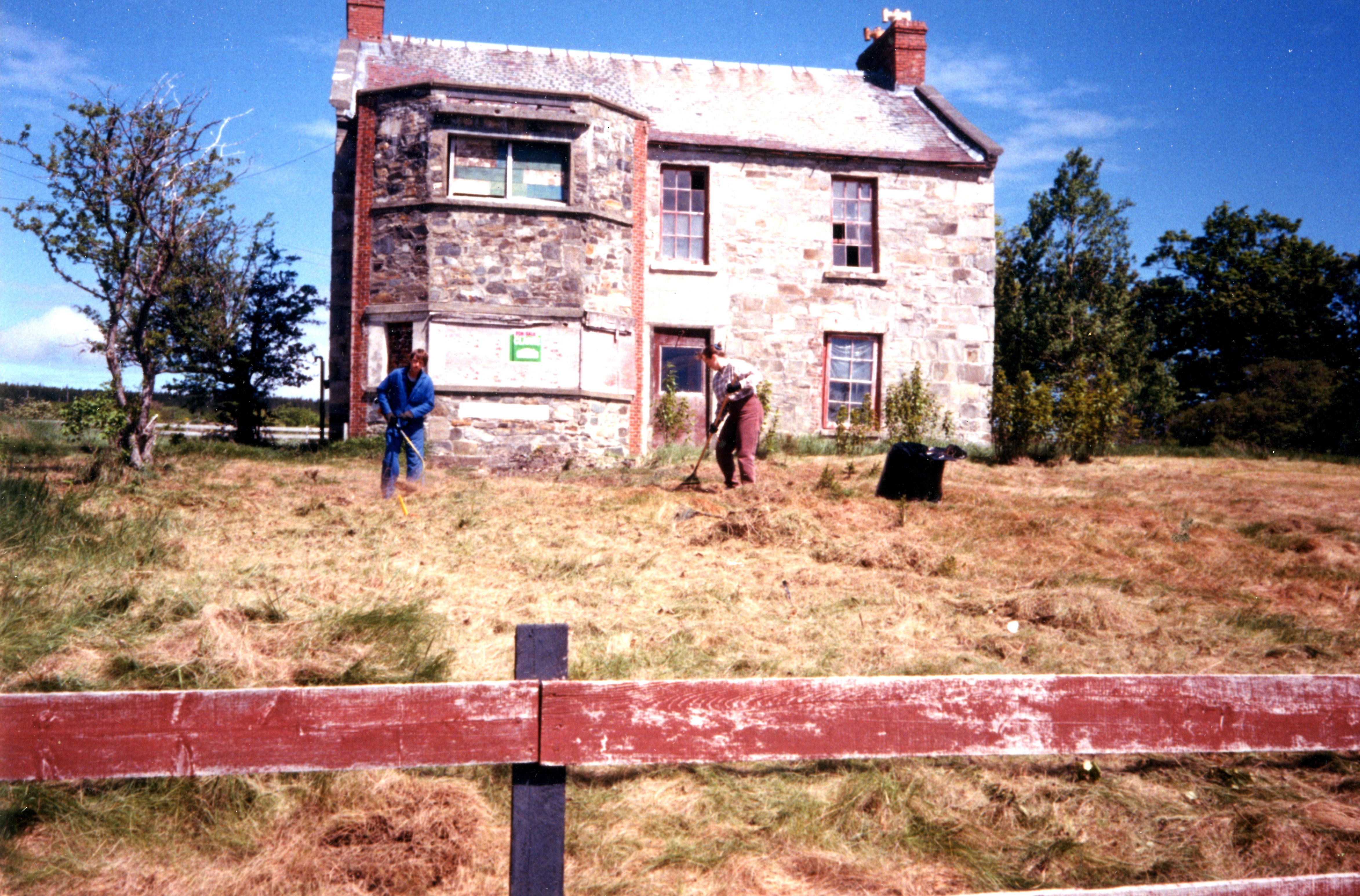
Figure 12: Ridley Hall, ca. 1999
Ridley Hall has provincial historic value due to its profound impact on the social, cultural, political and economic development of Harbour Grace, the “capital of Conception Bay.” Of the many stone structures in Harbour Grace, Ridley Hall is the only remaining stone building of a mercantile family and conveys the economic might of local elites in commercial rural centres. Though the residence of one family, the building had a large presence in the community: in its heyday, it was a place where grand wedding parties were held and where visitors, depending on their status, would be feted by the Ridleys, then one of Newfoundland’s most powerful merchant families, with substantial interests in maritime areas of the island’s trade and industry, particularly the seal hunt. When the Ridleys declared bankruptcy, the house remained a hub for cultural gatherings, a place where visual art shows, boys’ choirs, plays and book clubs were hosted.
Conversely, Ridley Hall’s prominence had a powerful symbolic affect on the working-class population of the Harbour Grace and Carbonear. Despite deferential gestures—the saluting of Ridley Hall—Thomas Ridley was assaulted and castigated multiple times during the pugnacious 1830s, when sealers’ strikes and violent political actions seemed to follow the merchant everywhere. Merchant homes seemingly represented the stark class divide in workers’ hearts and minds. For instance, when the 1832 striking sealers beckoned their demands, they paraded through the streets of Harbour Grace, halting in front of each merchant house to call out their agreement. Each merchant agreed to the terms in turn; and each agreement was saluted with a cheer and the men moved on. As the prime figure of the sealers’ ire, Ridley would have been visited too. Similarly, in the 1836 general election, Ridley was forced to withdraw as a candidate because of violence and intimidation. Then in the Conception Bay by-election of December 1840, while trying in his capacity as a magistrate to keep order, Ridley was hit over the head and nearly killed. Agitators knew where the community’s powerbrokers lived, and a nighttime visit from a baying mob wasn’t an uncommon occurrence in early-nineteenth-century Harbour Grace. For such reasons, Ridley Hall represents two sides of the mercantile, elite establishment of Newfoundland: often involved in charitable works and the betterment of their communities, merchants also provoked strong responses from ordinary citizens, whether they were workers or voters. Deference or revulsion could be reasonably expected, depending on whom you asked and when.
As mentioned above, Ridley Hall played an important role in the transmission of transatlantic communications—an oft-forgotten fact when people remember the building today. The cable station was a significant enterprise in the first half of the twentieth century and provided employment to many cable operators through the years. Sadly, other historic cable operations in Heart’s Content, Bay Roberts and St. John’s are remembered through the restoration of their buildings for contemporary uses—a provincial historic site in Heart’s Content; an art gallery, museum and town hall in Bay Roberts; and a world-class restaurant in downtown St. John’s—yet Ridley Hall remains a literal shell of its former self, despite the site’s potential.

Figure 13: Harbour Grace Registered Heritage District sign, 1999
Today, Ridley Hall’s value lies in the remnants of the once-imposing dwelling house and the history that was made there. Set upon a large plot of land, and within the Harbour Grace Registered Historic District, the ruins occupy a prominent area of town that can clearly be seen from the ocean, directly across the street. Because of its strong sense of permanence, the building acts as a marker, both in the landscape and memory, capturing the timeless spirit of old Harbour Grace.


